The Parish of Conwyl Gaio sits about eight miles from Llandovery, on the road from Llanwrda to Lampeter. The War Memorial takes the form of a fine marble plaque inside the Parish Church, and commemorates the men of the Parish who fell during the Great War of 1914-1918, some of whom are commemorated on other local memorials. Many thanks to Malcolm Ferguson-Thomas for the photograph of the memorial.
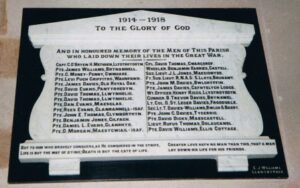
The Great War, 1914-1918
Benjamin Trevor Davies, Gunner, 123915, Royal Garrison Artillery. Benjamin was the son of Daniel and Esther Davies, of Pantyrhendre, Llansadwrn. He resided at Manchester House, Caio prior to the war, where he worked as a grocer. Benjamin enlisted at Llandovery on 21 October 1916 into the Royal Garrison Artillery. On 17 April 1917 he landed in France, where he entrained for Marseilles. Benjamin then sailed to Egypt before joining the 304th Siege Battery, Royal Garrison Artillery, which was part of the XCV Heavy Artillery Group. Benjamin fought in the Mesopotamian theatre, where he was wounded, and he sadly died of Meningitis following wounds on 5 March 1918, aged only 21. He is buried at Ramleh War Cemetery, Iraq.
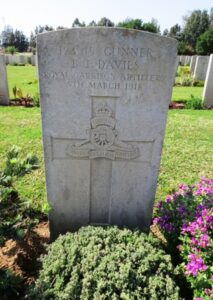
David Davies, Private, 50274, Welsh Regiment. David was born at Caio, the son of Mrs Davies, of the Castle Hotel, and the Brother of Reverend T. Eric Davies of Pontypridd. He enlisted at Carmarthen into the Army, joining the 16th Battalion (Cardiff City), Welsh Regiment, which was attached to 115 Brigade, 38th (Welsh) Division. The division moved to France during December 1915 and saw service in the line in Flanders, before moving to the Somme, where they attacked and captured Mametz Wood, at heavy loss. They then moved north to Ypres, where they spent the next twelve months on the Canal Bank at Boesinghe, from where they launched their attack during the Battle of Langemarck, on 31 July 1917. David was killed just three weeks later, on 20 August 1917. His grave was lost on the battlefield, and so he is commemorated on the Tyne Cot Memorial, Belgium. David does not seem to be commemorated locally.
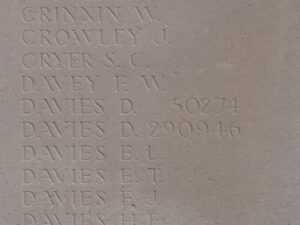
James Davies, Private, 15761, Welsh Regiment. James was born on 10 December 1896, the son of Isaac and Letitia Davies, of Old Royal Oak, Caio. He had been educated at Llandovery Intermediate School, and afterwards trained as a Joiner, before marrying Letitia, daughter of David Lewis of Llanybydder. When war broke out, James enlisted into the Army, and was posted to ‘A’ Company, 9th Battalion, Welsh Regiment, attached to 58 Brigade, 19th (Western) Division. The Division assembled around Bulford during September 1914. Divisional training was completed near Tidworth, and the Division crossed to France during July 1915, and moved to positions near Loos. The Division fought during the opening attack of the Battle of Loos, which is where James was wounded. He was evacuated to the Base Hospital at Etaples for treatment, but sadly died just days later, on 29 September 1915. James was just twenty years old, and is buried at Etaples Military Cemetery, France.
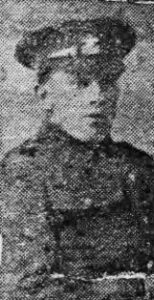
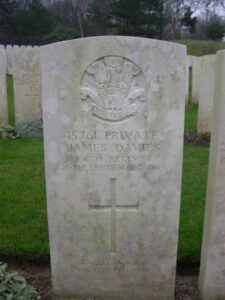
James Davies, Private, 204689, Canadian Infantry. James was born in Belfast on 3 December 1879, the son of John and Elizabeth Davies. The family returned to Wales, and lived at Cefntelych Lodge, Pumpsaint, Llandeilo, but James emigrated to Canada and worked there as a Farmer. He enlisted there at Saskatoon on 7 April 1916, and was posted to the 15th Battalion (Central Ontario), Canadian Infantry, which were part of the 3rd Canadian Brigade, 1st Canadian Division. The Division had been on the Western Front since February, 1915, and it is probable that James didn’t reach there until after the 1916 Somme Offensive, where the Canadians captured Regina Trench. In April 1917 however, he was with the Battalion, as they formed part of the attack force which were tasked with the capture of Vimy Ridge, and he also fought during the remainder of the Arras Offensive. James was Killed in Action at Arras on 16 August 1917, aged 38, and is remembered on the Vimy Memorial.
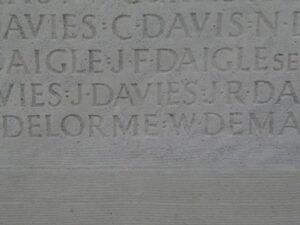
John Davies, Lance Corporal, 1628, Welsh Guards. John was born at Caio, and was the adopted son of Thomas and Elizabeth Davies, of Cefn Tir Esgob, Llandeilo. He enlisted at Ammanford into the 1st Battalion, Welsh Guards, which had been formed early in 1915 and attached to 3 Guards Brigade, Guards Division. This Division has the distinction of being formed in France in August 1915. The various Guards units that had been with other Divisions were withdrawn to be brought together to create this fine formation. It remained on the Western Front throughout the war and saw its first major action during the Battle of Loos on 25 September 1915, remaining in the area during the coming months, where they also fought in the subsequent Action of Hohenzollern Redoubt. John died just before the Welsh Guards moved to the Somme, on 17 July 1916 aged 20. He is buried near Ypres, at Brandhoek Military Cemetery.
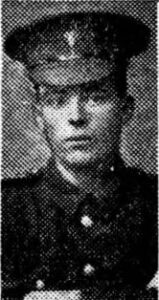
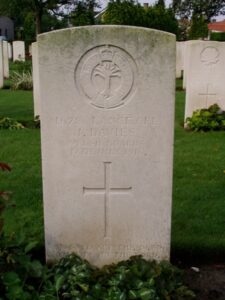
John Cynfyn Davies, Private, 55432, Royal Welsh Fusiliers. John was the son of the Reverend William Jones Davies, of Blaenblodau Hall, Pencader. He enlisted at Lampeter into the 16th Battalion, Royal Welsh Fusiliers, which was attached to 113 Brigade, 38th (Welsh) Division. The Brigade landed at Havre during December 1915, and moved to positions near Armentieres. They fought through some of the hardest and most famous battles of the Great War-at Mametz Wood during the Battle of the Somme, and at the Pilckem Ridge during the battle of Passchendaele. During March 1918, the 16th Battalion was in reserve at The Laundry, Erquinghem. On 6 March they relieved the 13th Welsh in support trenches at Houplines. Eight men were wounded by gas on 9 March, and for the next few days the area was continually shelled and gassed by the Germans. After suffering badly here the Division was rushed south to assist with the desperate defence of Albert. The German Spring Offensive had swept across the old Somme Battlefields, and had pushed the Allies back further than ever. However, the attack burnt itself out, and for several months this resulted in a stalemate settling along the line on the Somme. John was killed in action near Albert on 22 April 1918. He was 25 years old, and is remembered on the Pozières Memorial, France.
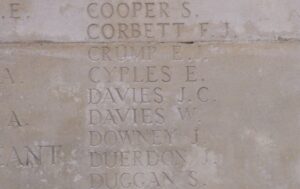
John Morgan Davies, Private, 27361, Welsh Regiment. John was the son of John and Mary Davies, of Bwllchyffin, Caio. Both of his parents had died by 1891, and John resided at Llanwrda prior to the war. He enlisted at Neath into the Army, and joined the 8th Battalion (Pioneers), Welsh Regiment, which was part of 40 Brigade, 13th (Western) Division. John had fought at Gallipoli with the Division, before it moved to take part in a drive across Mesopotamia. John was reported as missing after a battle against the Turks on 27 April 1918. His parents received the news in the form of a letter from the Army Office at Shrewsbury, but sadly John was never found. He is recorded as being killed in action on 27 April 1918, aged 30. He has no known grave, and is commemorated on the Basra Memorial. Many thanks to Martin Davies for the photograph.
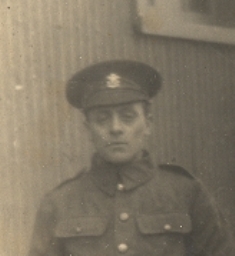
Oswyn St. Leger Davies, Lieutenant-Colonel, Manchester Regiment. Oswyn was the son of John Morgan Davies, D.L., J.P., and Jane Elizabeth Davies, of Froodvale, Llanwrda, and he resided near Llansawel. He was in Command of the 6th Battalion, Manchester Regiment, but transferred to be the Commanding Officer of the 8th Battalion, Lancashire Fusiliers, attached to 125 Brigade, 42nd Division. The Division had fought in Gallipoli and in Egypt, and on 27 February 1917 landed at Marseilles en route to the Western Front. The Division entered the line at Epehy then moved to Havrincourt where they remained until 8 July 1917, facing the Hindenburg Line positions in front of Cambrai. July and August saw the Division training at Albert, and in September, 1917 moved to Ypres to take part in the Battle of Third Ypres. After a series of unsuccessful attacks the Division moved to the Flanders Coast, and in November moved to Givenchy. When the German Spring Offensive of March 1918 was launched, Oswyn and his Battalion faced the onslaught at the Battle of Bapaume, and the First Battle of Arras. Oswyn was Killed in Action during the latter Battle, on 5 April 1918, aged 44. He was buried at Bienvillers Military Cemetery, France.
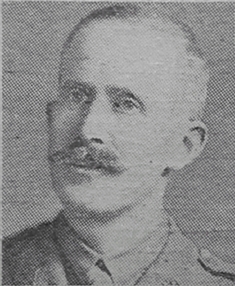
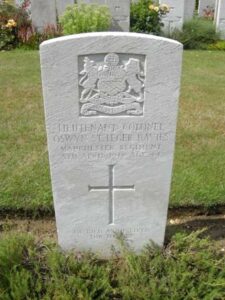
David Dicks, Private, 50967, Lancashire Fusiliers. David was the son of David and Gwen Dicks, of Maescastell, Caio, and had enlisted at Cardiff into the Army, joining the 11th Battalion, Lancashire Fusiliers, attached to 74 Brigade, 25th Division. The division moved to France during September 1915 and fought at Messines and Third Ypres, before being caught up in the German offensive on the Lys. The battered division then moved south to rebuild, but were unfortunately hit here again during a fresh German Offensive on the Aisne. David was killed in action here on 27 May 1918, aged just 18. He has no known grave, and is commemorated on the Soissons Memorial, France.
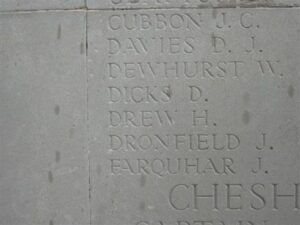
Daniel Evans, Private, 37321, Royal Welsh Fusiliers. Daniel was the son of Daniel and Mary Evans, of Maesglas, Caio. He enlisted at Llandovery on 15 December 1915 into the 22nd Battalion, Royal Welsh Fusiliers. On 19 March 1916 Daniel landed in France and was posted to the 10th Battalion, Royal Welsh Fusiliers, which was attached to 76 Brigade, 3rd Division. The division had been one of the first in France, and the 10th RWF joined it at the end of 1915. They were then moved south to the Somme, where they were to take part in the great Battle of the Somme, and fought there at the Battle of Albert, and at the Battle of Bazentin, where they captured Longueval. Daniel was wounded on 15 July, but soon rejoined the battalion, only to be killed on 19 August 1916, aged 22. He was originally posted as missing on that date, but was later found by a court of enquiry to be killed. Daniel has no grave, and is commemorated on the Thiepval Memorial, France.
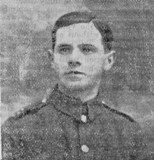
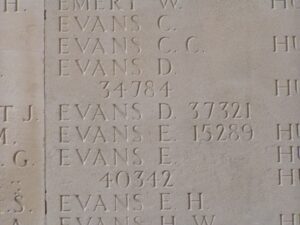
Daniel Lewis Evans, Acting Bombardier, 28575, Royal Field Artillery. Daniel was the son of John and Elizabeth Evans, of Glanrhyd, Caio. He enlisted at Mardy into the Royal Field Artillery, joining ‘B’ Battery, 91st Brigade, attached to the 20th (Light) Division. On 26 July 1915 the Division completed concentration in the Saint-Omer area, all units having crossed to France during the preceding few days. Early trench familiarisation and training took place in the Fleurbaix area. When the Battle of Loos was launched on 25 September 1915 the Division fought a diversionary attack towards Fromelles. Later that year they moved north, and fought at the Battle of Mount Sorrel alongside the Canadian Corps. Over the winter of 1915/16, the Division remained in positions south of Ypres, and fought at the Battle of Mount Sorrel in June, alongside the Canadian Corps. They then fought through the Somme Offensive, at the Battles of Delville Wood, Guillemont, Flers-Courcelette, Morval and Le Transloy, which is where Daniel was killed on 2 October 1916, aged 24. He is buried at Guards Cemetery, Lesbouefs, France.
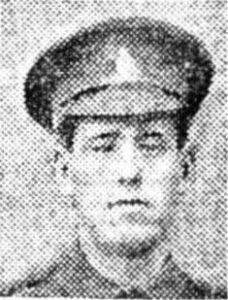
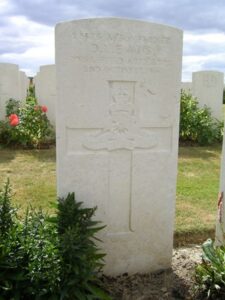
David William Evans, Private, 1270, Welsh Guards. David was the son of David and Margaret Evans, of Pantyrhedyn, Caio. The family later moved to Caegwyn, Llanycrwys. David became a policeman at Caerau, Maesteg prior to the war and enlisted at Bridgend into the 1st Battalion, Welsh Guards, which had been formed on 26 February 1915. The battalion moved to France on 18 August 1915, as part of 3rd Guards Brigade, Guards Division. The Division moved to the Loos Sector, and on 25 September 1915 took part in the Battle of Loos. David was killed two days into the battle, on 27 September 1915, aged 19. He has no known grave, and is commemorated on the Loos Memorial, France.
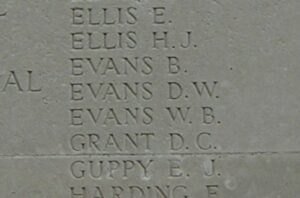
Rees Evans, Private, 37488, Royal Welsh Fusiliers. Rees was the son of David and Mary Evans, of Pencnwc, Llansawel. He worked as a farm labourer at Glanramell Park prior to the war, and enlisted on 11 December 1915 into the Royal Welsh Fusiliers. On 4 July 1916 he sailed for France, and two weeks later joined the 13th Battalion, Cheshire Regiment. The following month he was posted to the 1st Battalion, Royal Welsh Fusiliers, which was on the Somme attached to 22 Brigade, 7th Division. They then fought at the Battle of Bazentin, and the Attacks on High Wood, playing a successful part in the ‘dawn attack’, and were also the first troops into High Wood. The Division then took part in the Battle of Delville Wood, which is probably where Rees was killed on 21 August 1916, aged 20. He is buried at Lonsdale Cemetery, Authille, France.
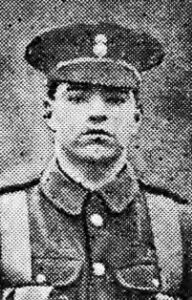
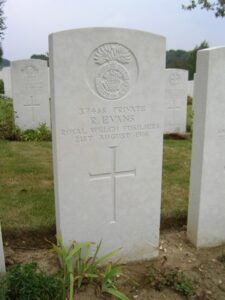
Levi Pugh Griffiths, Private, 34025, Royal Army Medical Corps. Levi was the son of Thomas and Elenor Griffiths, of Tynllethan, Cwmtwrch, Caio. He enlisted at Ammanford into the Royal Army Medical Corps. He served with the 32nd Field Ambulance, attached to the 10th (Irish) Division. On 27 June 1915 the Division received orders to prepare for service on Gallipoli, and embarked at Liverpool on 9 July. By the end of the month most units had assembled on Lemnos and from 6 August 1915 landed on Gallipoli at Suvla Bay, less the 29th Brigade, which went to ANZAC Cove Gallipoli. Levi was killed in action here during the Attack from Suvla on 17 August 1915, aged 26. He has no known grave, and so is remembered on the Helles Memorial, Gallipoli.
Benjamin Harries, Rifleman, 473290, London Regiment. Benjamin was the son of John and Mary Harries, of Castell, Caio. He had worked for the Civil Service for several years prior to the war, and enlisted at Marylebone into the 16th Battalion, London Regiment. He then transferred into the 12th Battalion (The Rangers), which was part of 168 Brigade, 56th (London) Division. The Division fought at the diversionary attack on Gommecourt then at Ginchy, Flers and Morval, where they captured Combles. They wintered on the Somme, and followed the German retreat to the Hindenburg Line in March, 1917 before fighting in the Battle of Arras. Benjamin was killed here, during the Third Battle of the Scarpe, on 6 May 1917, aged 32. He is buried at Tank Cemetery, Guemappe, France.
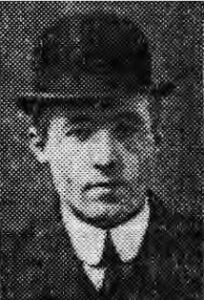
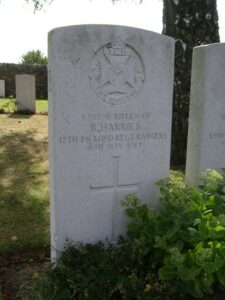
Benjamin Jones, Private, 79941, Canadian Infantry. Benjamin was born on 1 February 1890, the son of Thomas Jones, of Gilfach Wen, Caio. He had emigrated to Canada, and answered the call of his mother country for more men, enlisting at Medicine Hat on 19 November 1914 into the 31st Battalion (Alberta), Canadian Infantry. The battalion moved to the Western Front as part of 6 Brigade, 2nd Canadian Division, which had formed in May 1915. They spent a cold winter around Ploegsteert that year, and moved to the Somme during the summer of 1916, where they took part in the Battle of Flers-Courcelette, which is where Benjamin was killed on 15 September 1916, aged 29. He is commemorated on the Vimy Memorial, France.
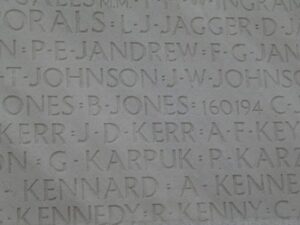
John Lewis Jones, Second Lieutenant, Welsh Regiment. John was the son of Dr. William Lewis Jones and Mrs. Elizabeth Jones, of Glyncothi, Nantgaredig. He was orphaned at an early age, and brought up by family at Caio. Prior to the war John lived with his cousin, Mrs. Walters and Miss Davies, at Walters Hotel, Lampeter. He had been commissioned into the Welsh Regiment, and had joined the 3rd Battalion for his training. John was sent to France in 1916, and fought there for seven months with one of the Service Battalions of the Welsh Regiment, until he was gassed, and sent home for treatment. John’s condition worsened and he died at Bedford House Hospital, Cardiff on 13 August 1917, aged 32. John is buried at Llanegwad (St. Egwad) Churchyard, North of the Church tower. Many thanks to Bev Lewis of Swansea for her photo of Johns’ grave.
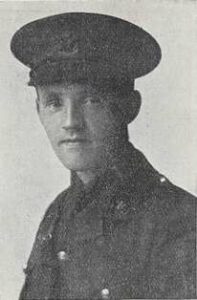
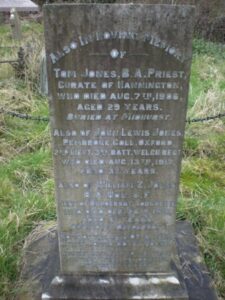
Seisyllt Hugh Lloyd, Lieutenant, Royal Naval Air Service. Seissyllt was born at Wrexham on 3 June 1898, the son of Lt. Col. George William David Bowen Lloyd and Mrs. Lilian Emily Lloyd. When his father retired from the Royal Welch Fusiliers, the family moved back to their home at Brunant, Pumpsaint. While his father went to France as second in command of the 2nd Battalion, Royal Welsh Fusiliers, Siesyllt was commissioned into the Royal Naval Air Service where he trained as a Pilot. He joined 10 Squadron RNAS in France, where he piloted a Sopwith Triplane. Seisyllt was flying over Zillebeke Lake on 14 August 1917, when he was shot down at around 16.00 by heavy anti aircraft fire, and was last seen heading west out of control. He was 19 years old, and is commemorated on the Arras Flying Services Memorial, France.

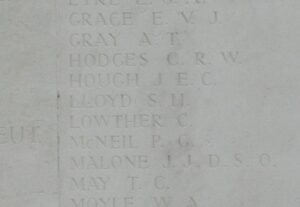
Cameron O’Bryen Harford Methuen, Captain, Royal Warwickshire Regiment. Cameron was the son of the late Colonel Charles Lucas Methuen and Mrs. Eleanor Mary Methuen, of Llystroyddyn, Pumpsaint, Carmarthenshire. He had served in the Boer War of 1899-1902, and by the time of the outbreak of the Great War was a Captain with the 2nd Battalion, Royal Warwickshire, which was attached to 22 Brigade, 7th Division. The Division was formed during September 1914 and landed at Zeebrugge on 6 October 1914. The City was already falling however, and so the Division was moved to Ypres, where they became the first British Division to hold the city. Cameron was killed during the First Battle of Ypres, on 20 October 1914, aged 37. He is commemorated on the Ypres (Menin Gate) Memorial, Belgium.
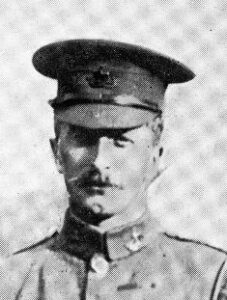
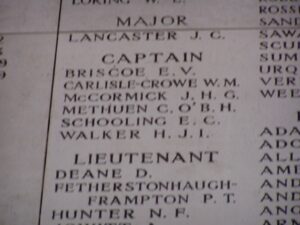
Charles Moneypenny, Private, 18858, South Wales Borderers. Charles was the son of Charles Moneypenny, of 5, Mitchell St., Old St., London, E.C.2. He must have lived at Caio prior to the war, as he enlisted at Llandovery into the Army, joining the 2nd Battalion, South Wales Borderers. Charles was posted to the Mediterranean, and landed at Gallipoli in May 1915 as a reinforcement to the battalion, where it was attached to 87 Brigade, 29th Division. Charles was wounded here and eventually arrived back in Britain for treatment, but sadly died on 17 September 1915, aged 22. He is buried at Nunhead (All Saint’s) Cemetery, England.
David Morgan, Private, 44408, Welsh Regiment. David was born at Caio, and enlisted at Swansea into the Army, joining the 18th Battalion (2nd Glamorgan), Welsh Regiment, part of 119 Brigade, 40th (Bantam) Division. This Division was formed between September and December 1915, composed of bantam units and others which had a mixture of regulation-height and shorter men. Weeding out of very under-sized or unfit men delayed the training programme, and it was not until late Spring 1916 that the Division was ready to proceed on active service. The Division moved to France during June 1916, and moved to the front near Loos. Late in 1916 they moved south to the Somme, and fought at the Battle of the Ancre, and remained in the area over the winter. David was killed on the Somme on 30 December 1916. He is buried at Guards Cemetery, Combles, France.
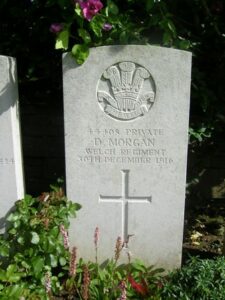
Henry Riggs, Petty Officer Gunner, 213047, Royal Navy. Henry was born at Easton in Gordano, Bedminster, Bristol on 27 May 1884, the son of Levi and Annette Augusta Riggs (nee Adams). Levi was a Coachman at Clifton at the time, moving his family to Llystroyddyn, Caio early in the 1900’s, where he took up work on the estate as the Coachman. Young Henry had enlisted into the Royal Navy at the turn of the century as a Boy Sailor, and by 27 May 1915 had completed his service. He then signed up for the remainder of hostilities, and served aboard HMS Berwick, where he was promoted Petty Officer Gunner. Henry was then posted to HMS Negro, a modern M Class Destroyer, which was attached to the Grand Fleet. Henry saw action aboard Negro in the Battle of Jutland on 31 May 1916, and during the course of the night, when the German High Seas Fleet escaped through minefields to safety. On 21 December 1916, Negro was operating with the Grand Fleet in the North Sea, off Fair Isle/Shetland Islands, when she collided with HMS Hoste. Several depth charges aboard Hoste detonated, damaging both ships severely. Negro foundered with heavy loss of life, while Hoste was taken in tow, but had to be abandoned before foundering. Henry was 32 years old when he died that day, and he is commemorated on the Plymouth Naval Memorial, Devon.
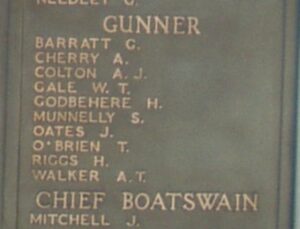
David Thomas, Private, 18563, South Wales Borderers. David was the son of Isaac and Mary Thomas, of Llwynhelig, Farmers. He enlisted at Ferndale into the 2nd Battalion, South Wales Borderers, which was attached to 87 Brigade, 29th Division. Again it is not presently known if David served at Gallipoli, but he was killed in action during the opening assault of the Battle of the Somme, on 1 July 1916. Within minutes of going over the top, at Beaumont Hamel at 07.30, David was one of hundreds of South Wales Borderers cut down by machine-gun fire. He was 34 years old, and is buried at Y Ravine Cemetery, Beaumont-Hamel, France. His nephew Johnny was killed just ten days later.
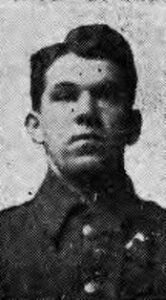
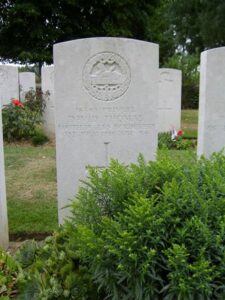
David Thomas (Johnny), Private, 44204, Welsh Regiment. David, known as Johnny, was the grandson of Isaac and Mary Thomas, of Llwynhelig, Farmers. He was brought up by the couple as their son and enlisted at Swansea into the 15th Battalion, the Welsh Regiment, which was the Carmarthenshire Battalion. The Battalion became attached to 114 Brigade, 38th (Welsh) Division, and embarked for France from Folkestone on 4 December 1915, disembarking at Boulogne the same day. During the winter and spring of 1916 the Battalion held nearly every section of the British line from Givenchy on the La Bassée Canal to Laventie, about six miles South of Armentières. At the end of May 1916, the Battalion moved South with the remainder of the 38th (Welsh) Division to the Somme area, in readiness for the First Battle of The Somme, which commenced on 1 July 1916. The 38th Division were tasked with the taking of the infamous Mametz Wood. The first attack on Mametz Wood was on 7 July, when the division lost heavily in ‘Death Valley’ during the advance on the ‘Hammer Head’. The next attack went in on 10 July, and by 14 July the wood was cleared, but at the cost of over 5,000 casualties in the 38th (Welsh) Division. David was Killed in Action on 11 July 1916 at Mametz, and is remembered on the Thiepval Memorial. He was just 22 years old. His uncle David was killed just ten days earlier.
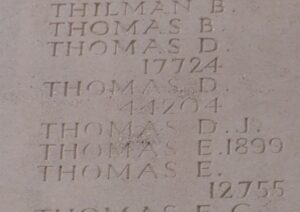
David Thomas, Lance Corporal, B/23540, Royal Fusiliers. David was the son of Rees and Ann Thomas, of Gwargorof, Caio, and enlisted at Wood Green into the 7th Battalion, Royal Fusiliers, part of 190 Brigade, 63rd (Royal Naval) Division. The original Royal Naval Division had fought at Gallipoli, before being re-designated the 63rd (Royal Naval) Division. The Division moved to France during May 1916 and moved to positions on the Somme, where it took part in the Battle of the Ancre, and the resulting Operations on the Ancre. In April, 1917 the Division were at Arras, and fought at the Second Battle of the Scarpe, where they captured Gavrelle. David was killed here on 23 April 1917, aged 27. He is buried at Orchard Dump Cemetery, Arleux-En-Gohelle, France.
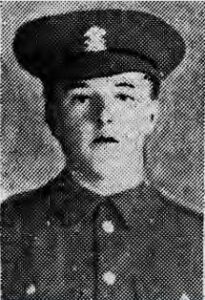
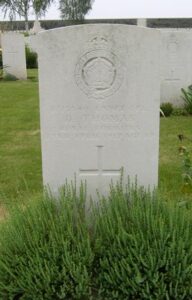
John Ebenezer Thomas, Private, 1071, Welsh Guards. John was from Cilycwm. He married Dorothy May Davies, of Glynborthyn Shop, Caio in 1915. John served with the 1st Battalion, Welsh Guards, attached to 3 Guards Brigade, Guards Division. The division saw its first major action during the Battle of Loos on 25 September 1915, remaining in the area during the coming months, where they also fought in the subsequent Action of Hohenzollern Redoubt. In July 1916 the Division moved to the Somme, where they fought at the Battle of Flers-Courcelette, which is where John was killed on 10 September 1916. He was 25 years old, and is buried at Delville Wood Cemetery, Longueval. There is a memorial to John at Cilycwm Parish Church.
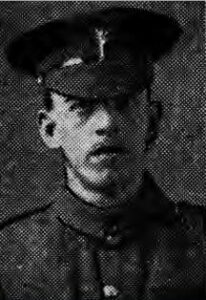
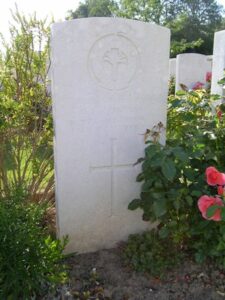
Rufus Haydon Thomas, Captain, Royal Army Medical Corps. Rufus was born in Kentucky in 1878, the son of Jonathan Starkie Thomas and Julia Thomas. He resided at Dolauganol, Caio prior to the war. He was commissioned on 13 September 1916 from the Canadian Army Medical Corps into the Royal Army Medical Corps, and was attached to the 2nd Royal Scots Fusiliers, which was attached to 21 Brigade, 7th Division. The division had fought through most of the major actions of the war, and were on the Somme early in 1918 when they were hit by the German Spring Offensive on 21 March 1918. Rufus was killed during the hectic withdrawal on 24 March 1918, aged 39. He is commemorated on the Arras Memorial, France.
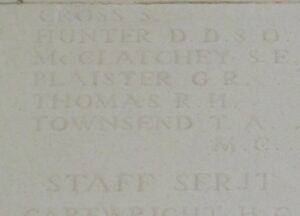
David Williams, Private, 320254, Welsh Regiment. David was the son of Thomas and Anne Williams, of Ellis Cottage, Pumpsaint, Llandilo, and he resided at Llanwrda prior to the outbreak of war. He enlisted at Carmarthen into the Pembroke Yeomanry, which had formed in Tenby for Home Defence, as part of the South Wales Mounted Brigade. They arrived in Egypt in March 1916, and on 2 February 1917 were disbanded, joining with the Glamorgan Yeomanry to form the 24th Battalion, Welsh Regiment, as part of 231 Brigade, 74th (Yeomanry) Division. The Division first saw action during the Second Battle of Gaza, and took part in the capture of Jerusalem before being sent to the Western Front, due to the terrible casualties that had been inflicted upon the British Army by the German Spring Offensive in March, 1918, and landed at Marseilles on 7 May 1918. Here they fought in the Battle of Épehy, where David was Killed in Action on 21 September 1918 aged 32. He is remembered on the Vis-En-Artois Memorial, France.

James Williams, Private, 4350, Pembroke Yeomanry. James was the son of William and Sarah Williams, of Bryn Ranell, Caio. He had been born on 24 April 1898, and at the outbreak of the Great War joined the Pembroke Yeomanry. James was posted to the 1/1st Battalion, which was attached to the 1st Mounted Division, and the regiment moved to Norwich early in 1915. It was here that James took ill, and sadly died of pneumonia on 29 January 1915, aged 16. He is buried at Norwich Cemetery. His parents’ grave at Caio has a memorial to James, and also had his bronze memorial plaque affixed, but this has sadly been lost over the last few years.
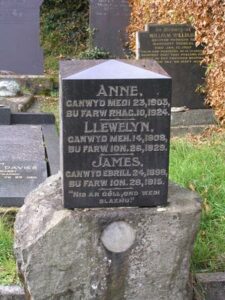
Timothy Davies Williams, Second Lieutenant, Royal Garrison Artillery. Timothy was born on 23 July 1883, the son of Reverend Charles and Harriet Williams, of Bwlchcefnserth, Caio. He had trained as a teacher, gaining his B.A. before taking up a post as History Master at the County School, Barry, and was the Husband of Louisa Davies Williams, of Claremont House, Bridgend, Glam. Timothy was commissioned into the Royal Garrison Artillery on 3 August 1917 and was posted to 248 Siege Battery, Royal Garrison Artillery in France. He was wounded during Kaiserschlacht- the German Spring Offensive, at the Battle of Bapaume, and died of wounds on 5 April 1918, aged 34. He is buried at Varennes Military Cemetery, France.

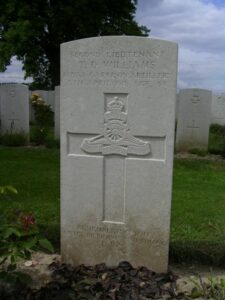
World War Two, 1939-1945
William John George, Trooper, 7937333, Royal Armoured Corps. Very little is known of William, but he was the son of William and Mary Anne George, of Caio, and the husband of Hannah Nora George, also of Caio. He died on home service on 27 November 1942, aged 38, and is buried at Caio (St. Cynwyl) Church Cemetery.
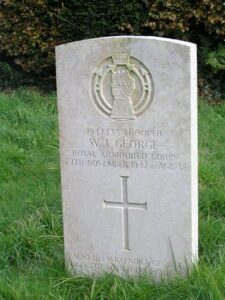
Ieuan Timothy Richard James, Flight Sergeant (Pilot), 1650057, Royal Air Force Volunteer Reserve. Ieuan was the son of Mr and Mrs James of the Caio Post Office. Little is presently known of Ieuan, but he served as a Pilot with 32 Squadron, RAF. In May 1940, the squadron flew patrols over northern France and took part in the defence of south-east England based at RAF Biggin Hill during the opening weeks of the Battle of Britain before moving to northern England at the end of August 1940. Soon after this 32 Squadron converted to the Supermarine Spitfire Mark VC aircraft. Operations included a deployment to Greece, where the squadron took part in the Greek Civil War from September 1944 to February 1945. Ieuan was killed here on 22 October 1944, and is buried at Phaleron War Cemetery, Greece.